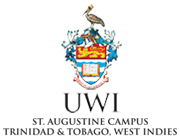Library Maintenance
Introduction
An essential part of the resources of a herbarium is a botanical library. Most of the books are botanical, but some may be on chemical, physical or mathematical aspects of plants and their constituents.
A herbarium library is a reference library, not a lending library, but all the other tasks usually carried out in a library have to be taken care of.
New books and periodicals have to be indexed. The books must be re-shelved when they have been used, and rebound when they have been heavily used or become too delicate. They may need treatment with preservatives.
In identifying plant specimens there is need to consult a wide range of books, particularly Floras and Check-lists.
It is also necessary to have maps, both old and new, showing parish boundaries, counties, and other political divisions, Also heights and, of course, old and new place-names.
Gazetteers, giving the names of places and their locations are also necessary to the herbarium library.
Travel books, not only those written by plant collectors, can also be of great use in determining, for instance, whether a plant was present in the country at a particular time.
Bibliographies of taxonomic literature, dictionaries of botanical names, glossaries of botanical terms, and taxonomic periodicals are also found in the herbarium library.
Floras
One of the major products of the research that is carried out based on herbarium specimens is the Flora, describing in detail the plants of a particular country or region of the world, and listing the actual specimens and where they are stored.
The first part of the Flora of Trinidad & Tobago was published in 1928, and most families of plants have since been completed.
Usually a taxonomist or expert classifier will spend a number of years studying a particular family - working with the specimens in a number of different Herbaria. By the time he has studied the whole family he is in a position to make decisions on which specimens belong together (in genera or species), where there is need to erect new species or to combine them together. He will then produce a monograph for the whole or part of a family.
The monograph may be published as part of a Flora, or as a stand-alone publication. A good example is provided by the work of Richard E. Schultes, some time Curator of the Botanical Museum of Harvard University, and earlier of the Orchid Herbarium of Oakes Ames. He spent several years studying the Orchidaceae, using specimens from Trinidad as well as in other Herbaria. One of the works he produced was a monograph Native Orchids of Trinidad and Tobago (1960). His work was also published, without the illustrations, as Volume III, Part 1 of the Flora of Trinidad & Tobago.
Our herbarium has many Floras from South, Central and North America, the Caribbean, Africa, India, and the Far East. This is necessary because plants in the tropics have been carried by Man from one continent to another. It is important to know whether a particular species is part of the native flora or was introduced.
Check-Lists
Another important component of the library is the check-list. A check-list is usually geographically based, and consists of a list of the names, both scientific and local, of plant species.
In addition, depending on the main purpose of the check-list, there may be other types of information, such as authority, synonyms, distribution, habitat, specimen citations, and uses. Sometimes keys may be included.
Check-lists may be arranged in alphabetical or systematic order. Usually they will be in systematic order with an alphabetical index. It is usual to have the same systematic order as is used in the arrangement of the specimens in the herbarium.





